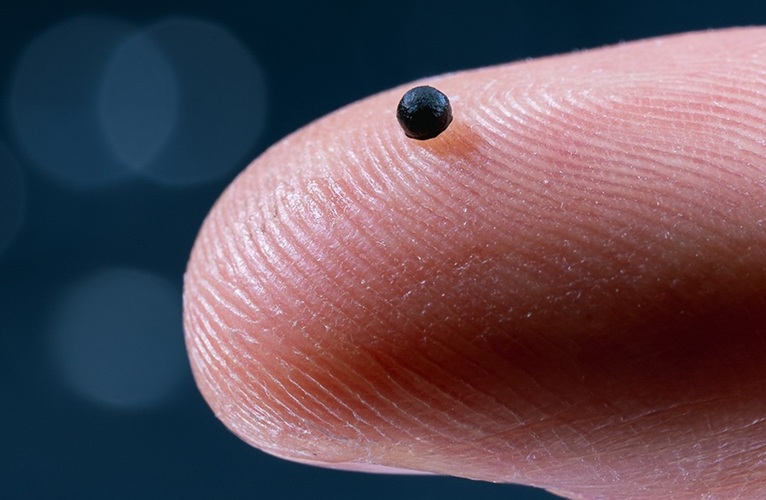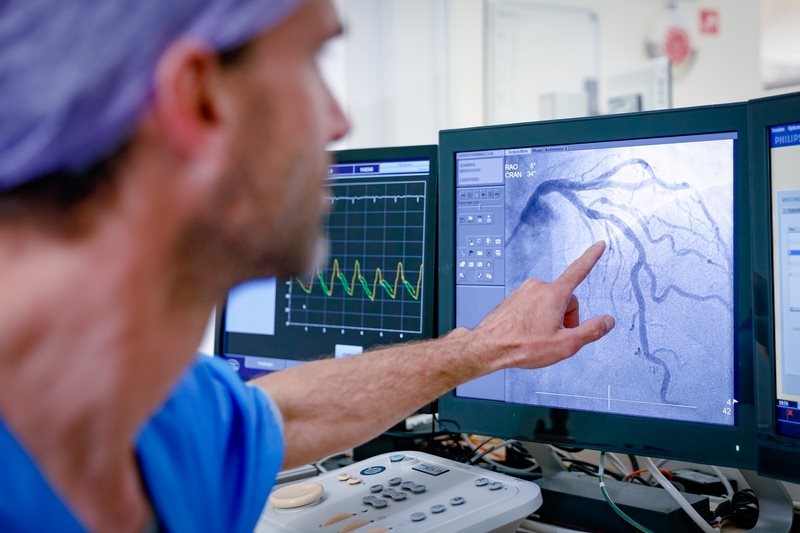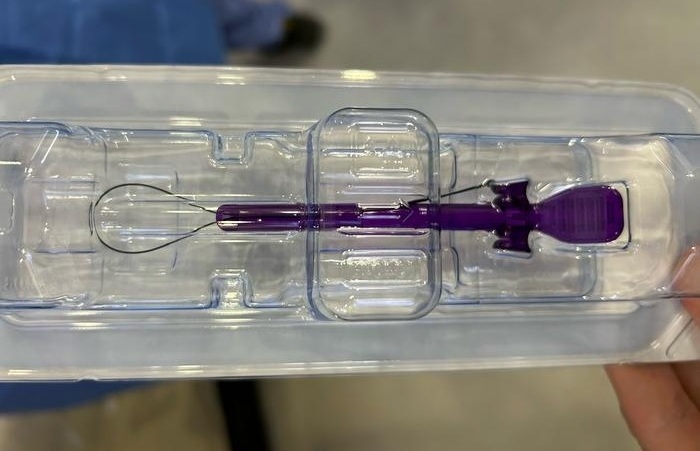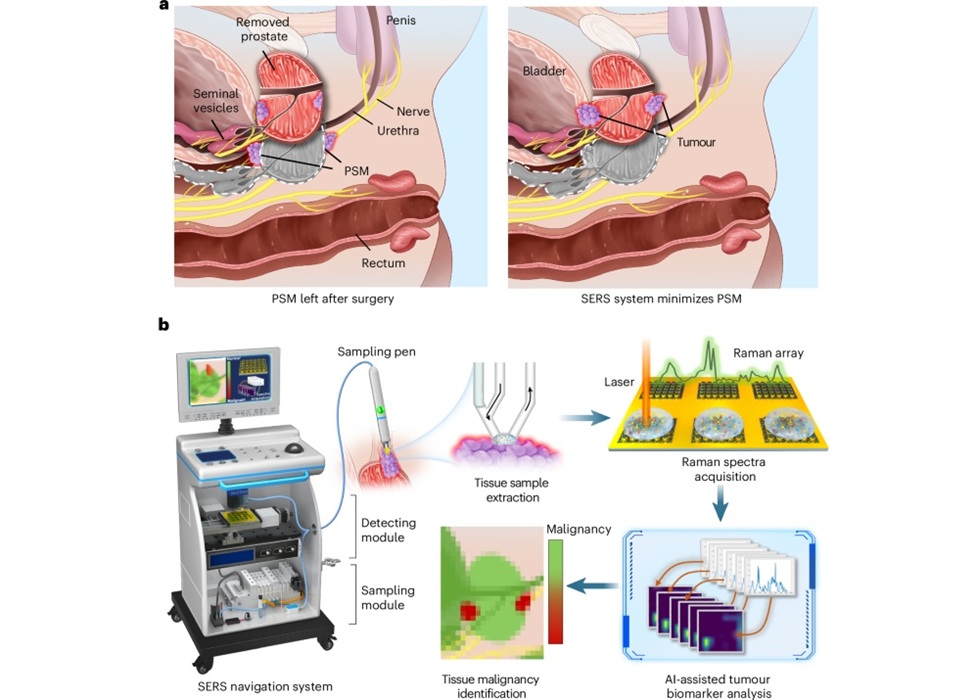Pelvic Muscle Trainer Treats Female Urinary Incontinence
|
By HospiMedica International staff writers Posted on 24 Mar 2017 |

Image: The WOMEN-UP system for treating urinary incontinence (Photo courtesy of UPC).
An innovative device uses cell-phone mobile games and remote medical monitoring to encourage at-home pelvic floor rehabilitation.
Under development at Universitat Politècnica de Catalunya, Kuopio University Hospital, and other institutions, the WOMEN-UP system consists of three elements. The first is a wearable pelvic floor muscle training (PFMT) abdominal belt with a set of sensors embedded in it and an additional vaginal probe, all connected to a wireless device that first records electromyographic signals from both the abdomen and the pelvic floor, and then sends the data to the smartphone app via Bluetooth.
The second component is the smartphone app, with an intuitive interface and games that provide an entertaining and efficient way to execute PFMT exercises with concurrent, automatic evaluation of completion. The app collects the PFMT and additional lifestyle performance data and sends it to a secure web server, which charts the progression of the treatment. The web platform also links to a Hospital Information System (HIS) and a clinical management program, permitting patient-therapist interaction.
“The therapist obtains information telematically through the platform and monitors and programs customized exercises, while the patient can evaluate the results in real time,” said project coordinator Professor Miguel Ángel Mañanas, PhD, of the UPC department of automatic control. “Both the patient and the therapist can see the evolution at any time.”
Urinary incontinence is about twice as common in women than men, and its likelihood rises with age. One large U.S. study found that almost one-quarter of women in their 60s and 70s had urine leakage at least once a month; the rate rose to one-third among women in their 80s. Caffeine can also stimulate UI because it is a diuretic, and people who already have an overactive bladder may be more susceptible to those effects; even low doses of caffeine can speed muscle contractions in the bladder. Risk factors for UI include obesity and past pregnancies with vaginal births.
Under development at Universitat Politècnica de Catalunya, Kuopio University Hospital, and other institutions, the WOMEN-UP system consists of three elements. The first is a wearable pelvic floor muscle training (PFMT) abdominal belt with a set of sensors embedded in it and an additional vaginal probe, all connected to a wireless device that first records electromyographic signals from both the abdomen and the pelvic floor, and then sends the data to the smartphone app via Bluetooth.
The second component is the smartphone app, with an intuitive interface and games that provide an entertaining and efficient way to execute PFMT exercises with concurrent, automatic evaluation of completion. The app collects the PFMT and additional lifestyle performance data and sends it to a secure web server, which charts the progression of the treatment. The web platform also links to a Hospital Information System (HIS) and a clinical management program, permitting patient-therapist interaction.
“The therapist obtains information telematically through the platform and monitors and programs customized exercises, while the patient can evaluate the results in real time,” said project coordinator Professor Miguel Ángel Mañanas, PhD, of the UPC department of automatic control. “Both the patient and the therapist can see the evolution at any time.”
Urinary incontinence is about twice as common in women than men, and its likelihood rises with age. One large U.S. study found that almost one-quarter of women in their 60s and 70s had urine leakage at least once a month; the rate rose to one-third among women in their 80s. Caffeine can also stimulate UI because it is a diuretic, and people who already have an overactive bladder may be more susceptible to those effects; even low doses of caffeine can speed muscle contractions in the bladder. Risk factors for UI include obesity and past pregnancies with vaginal births.
Latest Patient Care News
- Revolutionary Automatic IV-Line Flushing Device to Enhance Infusion Care
- VR Training Tool Combats Contamination of Portable Medical Equipment
- Portable Biosensor Platform to Reduce Hospital-Acquired Infections
- First-Of-Its-Kind Portable Germicidal Light Technology Disinfects High-Touch Clinical Surfaces in Seconds
- Surgical Capacity Optimization Solution Helps Hospitals Boost OR Utilization

- Game-Changing Innovation in Surgical Instrument Sterilization Significantly Improves OR Throughput
- Next Gen ICU Bed to Help Address Complex Critical Care Needs
- Groundbreaking AI-Powered UV-C Disinfection Technology Redefines Infection Control Landscape
- Clean Hospitals Can Reduce Antibiotic Resistance, Save Lives
- Smart Hospital Beds Improve Accuracy of Medical Diagnosis
- New Fast Endoscope Drying System Improves Productivity and Traceability
- World’s First Automated Endoscope Cleaner Fights Antimicrobial Resistance
- Portable High-Capacity Digital Stretcher Scales Provide Precision Weighing for Patients in ER
- Portable Clinical Scale with Remote Indicator Allows for Flexible Patient Weighing Use
- Innovative and Highly Customizable Medical Carts Offer Unlimited Configuration Possibilities
- Biomolecular Wound Healing Film Adheres to Sensitive Tissue and Releases Active Ingredients
Channels
Critical Care
view channel
Biodegradable Patch Repairs Damaged Tissue After Heart Attack
A heart attack causes sudden loss of oxygen to the heart muscle, triggering cell death and a strong inflammatory response that often leads to scar formation. While scarring helps stabilize the heart, it... Read more
Magnetically Guided Microrobots to Enable Targeted Drug Delivery
Stroke affects 12 million people globally each year, often causing death or lasting disability. Current treatment relies on systemic administration of clot-dissolving drugs, which circulate throughout... Read more
Smart Nanomaterials Detect and Treat Traumatic Brain Injuries Simultaneously
Traumatic brain injury (TBI) continues to leave millions with long-term disabilities every year. After a sudden impact from a fall, collision, or accident, the brain undergoes inflammation, oxidative stress,... Read more
Earlier Blood Transfusion Could Reduce Heart Failure and Arrhythmia in Heart Disease Patients
Blood loss during or after surgery can place significant stress on people with heart disease, increasing the risk of dangerous complications. Transfusions are often delayed until hemoglobin levels fall... Read moreSurgical Techniques
view channelNovel Endoscopy Technique Provides Access to Deep Lung Tumors
Detecting lung cancer early can save lives, but diagnosing small tumors deep in the outer regions of the lungs remains a major clinical challenge. Although CT scans frequently identify tiny suspicious... Read more
New Study Findings Could Halve Number of Stent Procedures
When a coronary artery becomes acutely blocked during a heart attack, opening it immediately is essential to prevent irreversible damage. However, many patients also have other narrowed vessels that appear... Read moreHealth IT
view channel
EMR-Based Tool Predicts Graft Failure After Kidney Transplant
Kidney transplantation offers patients with end-stage kidney disease longer survival and better quality of life than dialysis, yet graft failure remains a major challenge. Although a successful transplant... Read more
Printable Molecule-Selective Nanoparticles Enable Mass Production of Wearable Biosensors
The future of medicine is likely to focus on the personalization of healthcare—understanding exactly what an individual requires and delivering the appropriate combination of nutrients, metabolites, and... Read moreBusiness
view channel
Philips and Masimo Partner to Advance Patient Monitoring Measurement Technologies
Royal Philips (Amsterdam, Netherlands) and Masimo (Irvine, California, USA) have renewed their multi-year strategic collaboration, combining Philips’ expertise in patient monitoring with Masimo’s noninvasive... Read more
B. Braun Acquires Digital Microsurgery Company True Digital Surgery
The high-end microsurgery market in neurosurgery, spine, and ENT is undergoing a significant transformation. Traditional analog microscopes are giving way to digital exoscopes, which provide improved visualization,... Read more
CMEF 2025 to Promote Holistic and High-Quality Development of Medical and Health Industry
The 92nd China International Medical Equipment Fair (CMEF 2025) Autumn Exhibition is scheduled to be held from September 26 to 29 at the China Import and Export Fair Complex (Canton Fair Complex) in Guangzhou.... Read more















